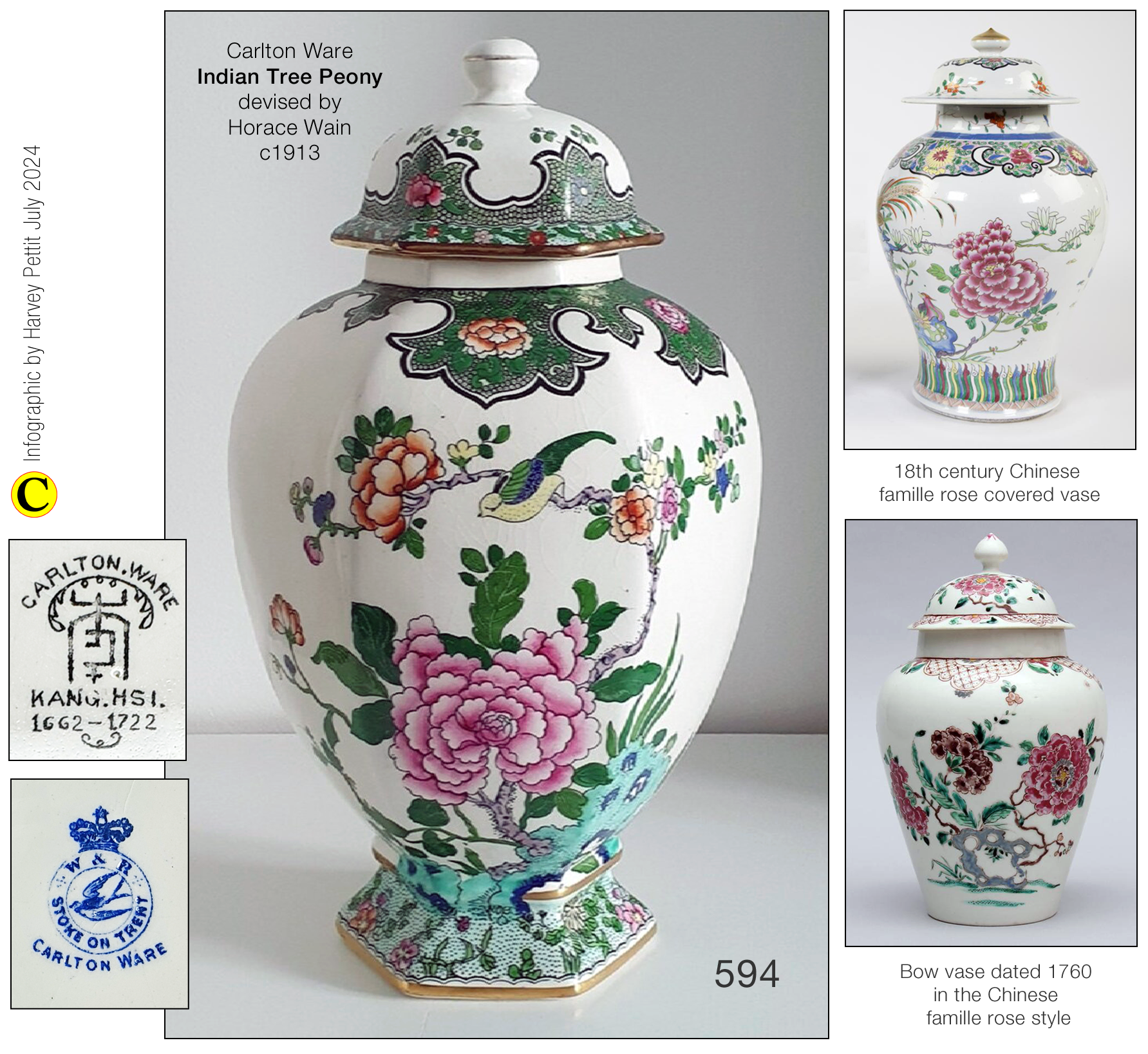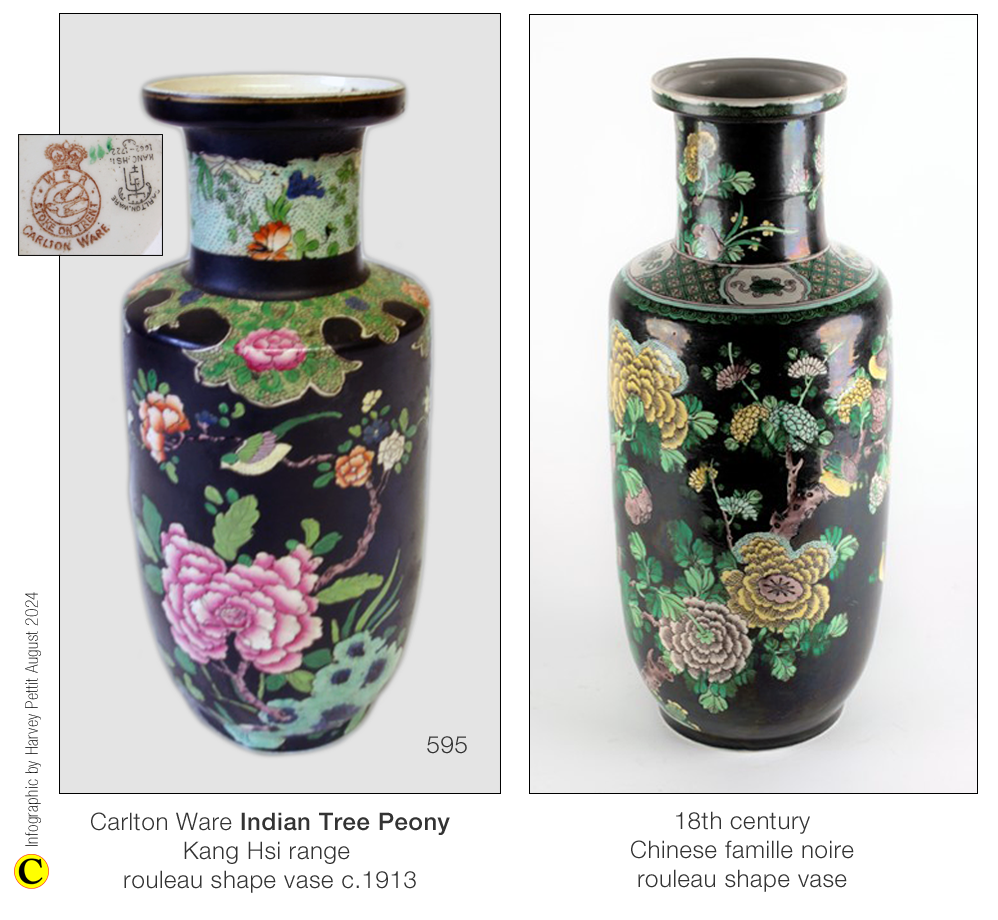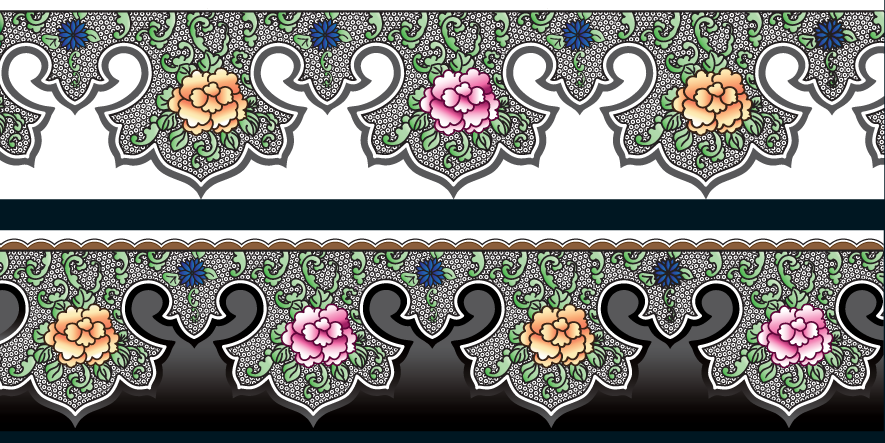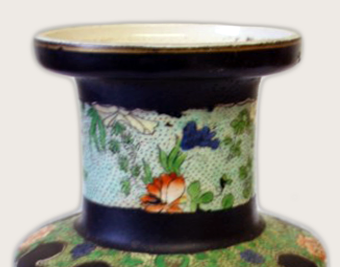
Indian Tree Peony
Carlton Ware's Indian Tree Peony pattern and its Borders
by Harvey Pettitwith border artwork by Barbara Anne Lee
Below is an image of a Carlton Ware hexagonal covered vase decorated with Horace Wain's generically named Indian Tree Peony pattern. I also show the two backstamps usually found on examples.
Next to the Carlton Ware, I show two eighteenth century covered vases decorated similarly, one from China and the other a copy after the Chinese made by Bow, one of the first makers of porcelain in England, around 1760.

Images on the right - Eighteenth century examples of similar patterns from China and Bow in England.
To return to this page use your back button.
Horace Wain's interpretation of such a widely reproduced Chinese pattern was introduced shortly after he began his time at the Carlton Works around 1913. His version was printed in black and hand enamelled, whereas the much older examples shown above were freehand painted.
As you can see from the infographic backstamp insets above, Indian Tree Peony was part of Carlton Ware's KANG HSI range, though the special KANG HSI mark is not always present. Perhaps the special mark, derived from a Chinese character, devised by the sinophile Wain, was discontinued when the designer left the Carlton Works around 1921 to be replaced by Enoch Boulton.
Famille Noire
The pattern was also available with a black ground in simulation of the Chinese famille noire so named because black is the dominant colour.
I show a rouleau shape vase below next to a Chinese example probably
from around 1750. 
Right - Eighteenth century Chinese famille noire rouleau shaped vase.
To return to this page use your back button.
Wain also adopted Chinese shapes, fashionable at the time. They quickly replaced the earlier more elaborate blushware shapes less suited to his reproductions.
Border used with Carlton Ware's Indian Tree Peony pattern:
Indian Tree Peony Border
Barb has redrawn it for us below. Like Wain's WILLOW 590,
Indian Tree Peony and its border was printed in black.

© Barbara Anne Lee 2024. To see this image fit your device's screen and/or enlarge it click or tap on the borders.
To return to this page use your back button.

Sheet Pattern
The neck of the rouleau shape vase, shown right, also appears to have a border but it is part of a sheet pattern cut into a wide strip to suit the neck of the vase.
Sheet patterns were widely used on some of the finer Blushware patterns that preceded Wain's tenure at the Carlton Works, though this one appears to have been by Wain's hand. These embellishments were ancillary to the main pattern and often used on necks and feet of vases, cut to suit as in the case here.

Today
Sheet patterns, produced in the traditional way by being printed onto tissue paper for transfer onto ware, are still used today by Burleigh Ware in Middleport, Stoke-on-Trent.
On the right I show an image of printed sheets of their 'Blue Regal Peacock' pattern hanging up after being printed and ready for use. The pattern caught the eye of Queen Mary when it was launched in 1913, coincidentally the year that Horace Wain is considered to have begun his employment at the Carlton Works.
Barb would like to thank the members who supplied good quality images to help her replicate the borders above.
Harvey
V1 August 2024.
If more accurate information comes to light I will update this page.
NOTE - To help you avoid mixing up pattern and shape names I use some simple typographic conventions. You can read them by clicking or tapping on the button on the left below.
Or